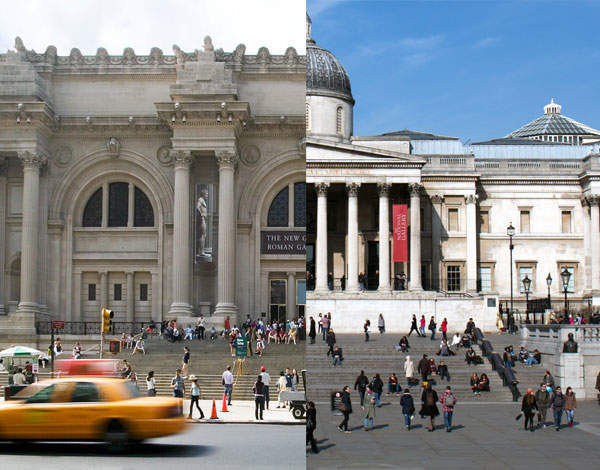

London and New York, where Sotheby’s and Christie’s hold their record-smashing Impressionist and Post-War & Contemporary auctions, are still the top two art centres in the world.
Both cities have vibrant art markets with a large number of galleries and private dealers specialising in every kind of art, from British works on paper to American furniture. But underneath the blue-chip brand-name Contemporary market, there are important differences.
Whereas the majority of powerful Contemporary galleries are based in New York, catering primarily to the US market, the dealers specialising in Old Masters, Impressionist and 19th-century European art have a greater presence in London, which, due to its proximity to Europe, Russia and the Middle East, is home to a more international collector base.
Read more on art and collecting from Spear’s
But as a result of the influx of foreign capital in recent years London’s art market has become as dynamic as that of New York, with powerful Contemporary galleries like David Zwirner, Pace and Marian Goodman latterly opening.
A sharply distinguishing factor between the two cities is taxation. This is a concern for high net worth individuals everywhere, but the US system is particularly complex with legislation at both the federal and state level.
The New York State budget, for example, which is effective per 1 April 2014, has made significant changes to the taxation of trusts and estates in New York and includes an increase in its estate tax exclusion. With art values going through the roof collectors need to stay abreast of such developments as these matters can be potentially costly.
The well-documented dispute over Robert Rauschenberg’s Canyon (1959) is a case in point. The collage, which was owned by Ileana Sonnabend, a prominent art dealer, contains a stuffed bald eagle. The IRS had the work valued at $65 million for estate tax purposes.
Sonnabend’s heirs argued that its value was zero: as it is illegal to sell a bald eagle under federal law, there is no market for the work and thus no fair market value. The dispute was settled in 2012, five years after Sonnabend’s death, and Rauschenberg’s work was donated to MoMA.
Although the Rauschenberg case is an extreme example, there can be significant financial consequences to owning an art collection that has gone up in value so exponentially. Fortunately, not only does New York have a thriving trust and estate community, it is also rather advanced when it comes to art financing solutions.
For example, in order to offset the tax bill or to avoid having to sell works at rock bottom prices, many private banks and speciality lenders provide loans with art as collateral where the collector may be able to keep the work on his wall.
Stephen Brodie, partner with Herrick Feinstein in New York and the firm’s expert on art lending, says: ‘The biggest difference I find in art finance between New York and London is that the UCC [the Uniform Commercial Code, which allows art-collateral to stay on the walls] makes the process much easier for private bank-style lending. There is certainly demand for these kinds of loans both in New York and in London but perfecting a security interest in a personal art collection in the UK, without taking possession, is difficult if not impossible.’
Although personal pleasure is still the chief reason for buying art across the globe the opportunity to use it as a financial tool certainly adds another, attractive dimension to owning it.
Art is viewed as a business in the US, more so than in the UK; in America, certain sectors of the art market such as art finance and art advisory, my own field of expertise, are much more advanced. I have worked in both cities for almost fifteen years and although I love London’s old school charm, it is a lot easier and faster to do business in overtly commercial New York.
Annelien Bruins is senior art adviser and COO at Tang Art Advisory
Main picture shows the Metropolitan Museum of Art, New York (left) and the National Gallery, London (right)






